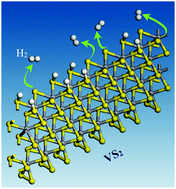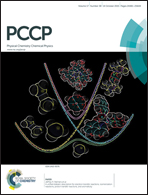A first-principles study on the hydrogen evolution reaction of VS2 nanoribbons†
Abstract
Nanostructures have attracted increasing interest for applications in electrolysis of water as electrocatalysts. In this work, the edge-catalytic effects of one dimensional (1D) VS2 nanoribbons with various edge configurations and widths have been investigated based on first-principles calculations. We show that the catalytic ability of VS2 nanoribbons strongly depends on their edge structure, edge configuration, and width. We find that the S-edges of VS2 nanoribbons are more active in electrolysis of water than V-edges due to their optimal Gibbs free energy for hydrogen evolution reaction in a wider range of hydrogen coverages. We also find that narrow nanoribbons show better catalytic performance than their wide counterparts. We further show that the S-edge of narrow VS2 nanoribbons with their V-edge covered by eight sulfur atoms has near-zero Gibbs free energy of hydrogen adsorption and comparable catalytic performance with Pt to a wide range of hydrogen coverage, which is contributed to its metallic characteristic. We expect that VS2 nanoribbons would be a promising 1D catalyst in electrolysis of water because of their impressive catalytic abilities both on the basal planes and edges.


 Please wait while we load your content...
Please wait while we load your content...